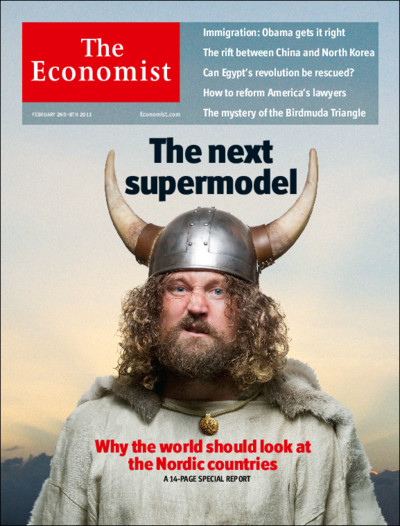In The Economist, a sort-of-apology for perpetuating the myth that Vikings wore helmets with horns:
The practice of burying the dead with their goods has left archaeologists with lots of evidence about the Vikings, who were arguably the first maritime superpower. Unfortunately, few Viking helmets survive intact. The small sample size cannot prove the point definitively, but they are all horn-free.
Why, then, do cartoon Vikings, Scandinavian football fans and Economist covers persist in giving their helmets horns? As in the rest of Europe, Scandinavia saw an upsurge of interest during the 19th century in home-grown cultural traditions and images. Folk dances, songs, sagas — all were revived and celebrated. The 18th century had seen most of Europe trying to imitate sophisticated Parisian fashions. Now trolls were cool. Where there were gaps in the historical record, artists often used their imagination to reinvent traditions. Painters began to show Vikings with horned helmets, evidently inspired by Wagner’s costume designer, Professor Carl Emil Doepler, who created horned helmets for use in the first Bayreuth production of “Der Ring des Nibelungen” in 1876, as a reader points out in a letter we publish this week. (For the full story, see Roberta Frank, “The Invention of the Viking Horned Helmet“, published in International Scandinavian and Medieval Studies in Memory of Gerd Wolfgang Weber, 2000.)





Once I thought about it, a long time ago, horns on a helmet seemed silly. The wearer wants a sword blow to glance off, not get caught up in the horn and drag it around.
Comment by Brian Dunbar — February 19, 2013 @ 19:06